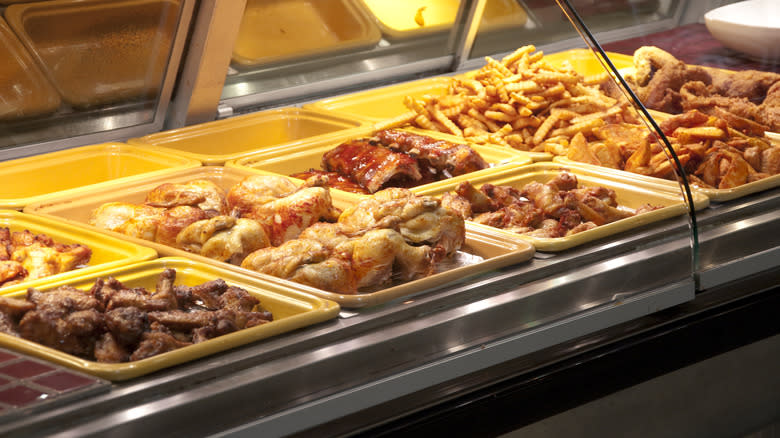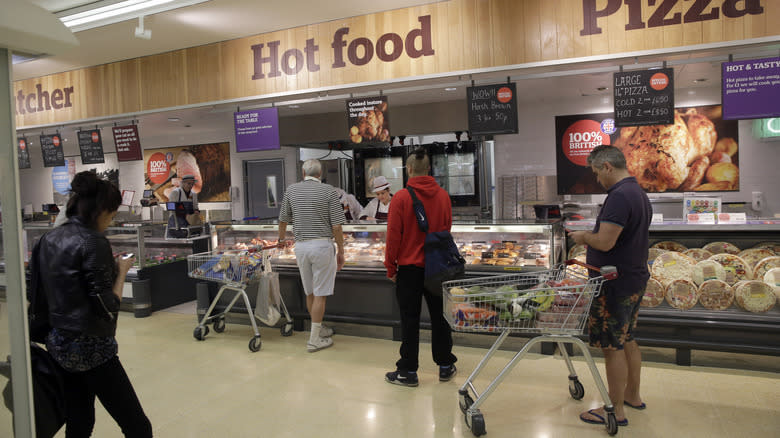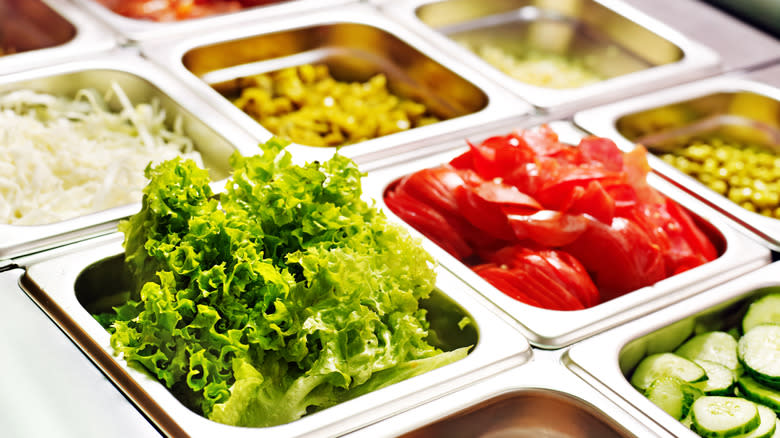The Common Mistake When Buying Prepared Food At The Grocery Store

Because you may not want to cook an elaborate meal after a lengthy shopping excursion, prepared food is a welcome dinner-time alternative. However, there's one crucial step in the process that many shoppers purchasing prepared items neglect. Always check the temperature of prepared foods before buying them using one of the following methods.
When choosing a dish from the display case, check the thermometer. It should be somewhere on the front of the counter within the vicinity of the food inside. With cold items, the thermometer should read 41 degrees Fahrenheit or lower. As for hot foods, the thermometer reading should be greater than 135 degrees Fahrenheit. If you don't see a thermometer or can't make out the reading, ask a staff member for assistance. Proper etiquette is key to avoiding being rude at the grocery store, so be sure to approach the employee from a place of respect. Simply ask if they can tell you the temperature of the prepared food you're buying, as the proper temperature range is key to safeguarding yourself against foodborne illness.
Read more: The 6 Best And 6 Worst Grocery Stores To Buy Produce From
Why Temperature Matters When It Comes To Food Safety

Temperature is an important factor in the quality of prepared food, but it can also impact food safety. Bacterial growth can lead to serious bouts of illness, so avoiding food safety mistakes is a crucial concern for purveyors of prepared foods. One major misstep is letting food stray into the danger zone, which refers to a specific temperature range. Food that falls within this range has a much higher chance of developing harmful bacteria, which can turn a quick and tasty meal into a veritable nightmare of food poisoning symptoms.
As for the exact danger zone range, food that's between 41 and 135 degrees Fahrenheit faces a greater risk of bacterial growth. Additionally, bacterial growth is accelerated when food is between 70 and 125 degrees Fahrenheit, which means this temperature range is even more hazardous. Time is another factor in food safety, as extended exposure increases the chance of bacterial growth. Grocery stores that offer prepared food to customers must be aware of the danger zone to prevent major issues. Consumers should also be aware, as knowledge of the danger zone helps them choose safe and delicious foods.
Bacterial Growth Can Happen Quicker Depending On The Food

Certain foods fall into the category of time/temperature control for safety, which is commonly abbreviated as TCS and denotes which foods are more susceptible to bacterial growth. In general, three characteristics determine whether a food falls into the TCS category. Foods with high concentrations of moisture, those with lots of protein and carbs, and mildly acidic or neutral items are more likely to develop bacteria than foods without these characteristics. These foods pose a special risk because they contain the moisture and nutrition that bacteria need to be fruitful and multiply.
As for specific TCS foods, the category includes lots of items you might find within your local grocery store's prepared food case. Meat, potatoes, and seafood are all included, as are cooked vegetables, dairy products, leafy greens, and certain fruits (such as sliced pieces of melon). Keep in mind that these foods are perfectly safe when prepared food cases maintain the correct temperatures. Problems only occur when prepared items are not kept at a safe temperature and when exposure to these temperatures persists. Food poisoning is highly unpleasant, so being mindful of temperature is key to avoiding its effects when shopping for convenient meals.
Read the original article on Daily Meal.

